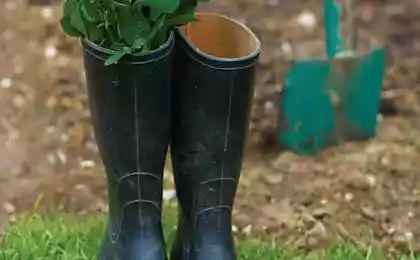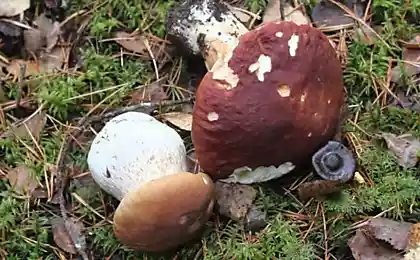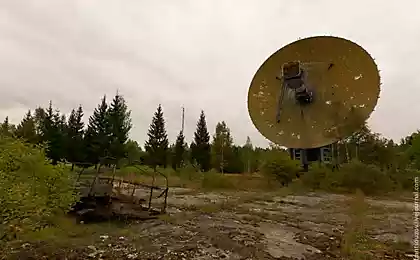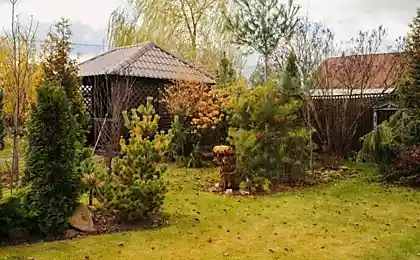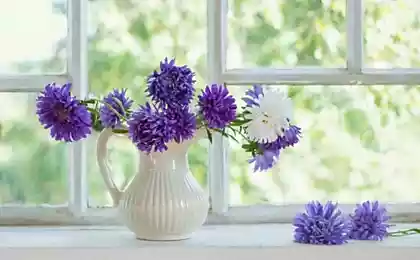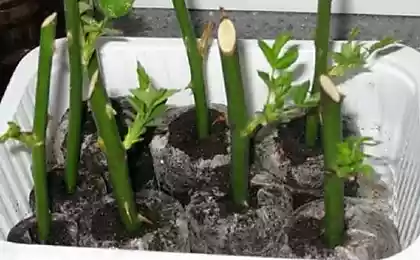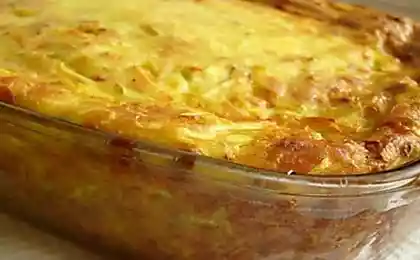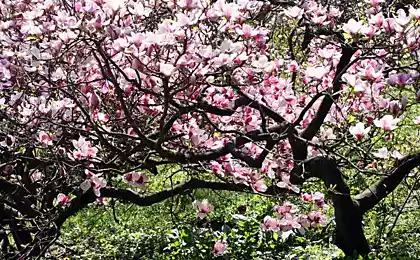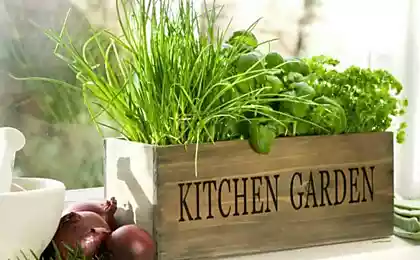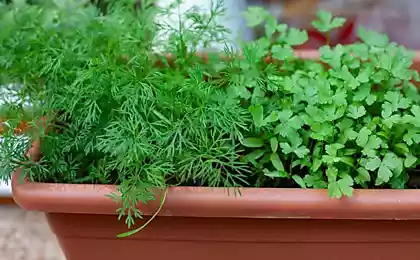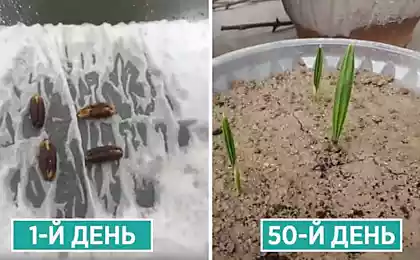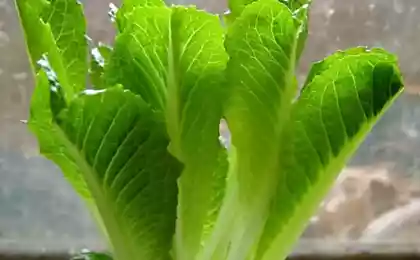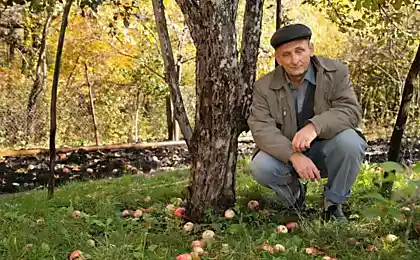389
How to grow lagenaria
Thirty seven million five hundred nine thousand three hundred fifty
Lagenariya or as it is called bottle gourd, is one of the oldest cultivated plants which are known by the mankind. But appreciate its not for taste, the fruit is of pumpkin for a very long time people use as dishes. This plant is known since the middle ages, in Central Europe, the plant was extremely popular. The home of lagenaria is considered Africa and America. So when you dig in Peru was discovered jars made from the fruit of pumpkin, which for twelve thousand years, similar findings were also found in Mexico and Thailand.
Lagenariya has several names: Vietnamese squash, Indian cucumber, bottle gourd, Calabash, and many others. The fruit of this plant can reach 1.5 – 2 meters, but there are also miniature forms. There is also lagenaria fruit whose shape resembles a long, narrow jug or flask. These varieties can't be eaten, they are considered purely decorative.
Lagenariya growing
To grow a pumpkin worth a try, despite the fact that it has the same properties as regular zucchini. But for the cultivation of lagenaria need a long growing season, this period for different varieties can vary from 120 to 150 days. In a harsher climate such pumpkins grow only through seedlings, otherwise pumpkin is not time to ripen. Sowing seedlings should be done in about a month and a half before transplanting into the ground.
Sixty two million seven hundred sixty eight thousand two hundred two
Preparation of seed for planting
The seeds of lagenaria large and flat, with a very hard and dense shell. In order that the seeds have germinated they should be steam otherwise most of the seeds simply will not hatch. For steaming the seeds are placed in a flask with water heated to 35-40 °C and allowed to stand for one day. The seeds are then removed from the flask, spread on a damp cloth or cotton wool and placed in a plastic bag. The package is placed in a warm place with temperature not less than 28-30°C and kept there until the seeds will not germinate.
Planting seeds in pots
As soon as you notice that the seeds have sprouted, place the seed in pots, pre-filled with nutrient soil. The pot should be no less than a liter. Prevent the seeds in moist soil at a depth not more than 3cm, sprinkled the ground and lightly crush. You can make over the pots in the hotbed, this will accelerate the germination of seeds.
Seedlings are ready for transplanting into the ground
Growing seedlings
Seeds germinate about two weeks after planting in the greenhouse – day to two-three faster. For a successful shoot should maintain the air temperature at least +23(+25)°C, at lower temperatures, the seedlings will slow down. Further care seeds simple: you just need timely watering seedlings and to prevent the lowering of the temperature. Do not overfill, otherwise the plants may get sick. Transplant into soil is only possible when the threat of late spring frosts, but until that time it is necessary to keep the home warm conditions. If you transplant the plant before, and it'll freeze, then with a greater likelihood of flowering is delayed or it does not.
Transplanting plants into the ground
Transplant plants in the open ground
For transplantation as mentioned, wait until the threat of frost passes and the warm weather will be established. Land for planting prepare in advance, and remember that one plant requires a lot of space. And all because of the scourge bottle gourd can reach 5 to 15 meters in length, but to save space you can put a pumpkin to grow on the trellis. Directly before planting, prepare a hole, the distance between which shall not be less than meters. To each well is desirable to pour 2-3 tablespoons of any nitrogen fertilizer, 1 tablespoon of potash, if not, then you can replace 1 Cup of ash. Also, add in the hole at least half a bucket of humus or compost. After preparing the plant carefully transplant and liberally pour.
Cultivation of lagenaria on the trellis
Additional fertilizing
For the successful growth and development the plant needs nitrogen and potassium in almost equal shares. Feeding produce every 7-10 days throughout the growing season. It is best to alternate between mineral and organic fertilization.
For mineral supplements take nitrogen fertilizer 3 tablespoons potassium 2 tablespoons, dissolve in 10 liters of water and this solution water your pumpkin. Organic fertilizer can be different, suitable manure, diluted with water in proportion 1 to 10, bird droppings – 1 to 20, etc. Under one plant pour 1 liter of fertilizer.
One of the types of lagenaria
Pollination
Blooms lagenariya usually in the evening when most insects are asleep. In this regard, if you have no nocturnal insect pollinators, propylite flowers manually. The difficulty of this process is the definition of male and female flowers. Inspect them carefully: if the flowers have small fruits are the flowers of the female, if not then male. The female flowers are pollinated by several men.
Source: www.art-pen.ru
Lagenariya or as it is called bottle gourd, is one of the oldest cultivated plants which are known by the mankind. But appreciate its not for taste, the fruit is of pumpkin for a very long time people use as dishes. This plant is known since the middle ages, in Central Europe, the plant was extremely popular. The home of lagenaria is considered Africa and America. So when you dig in Peru was discovered jars made from the fruit of pumpkin, which for twelve thousand years, similar findings were also found in Mexico and Thailand.
Lagenariya has several names: Vietnamese squash, Indian cucumber, bottle gourd, Calabash, and many others. The fruit of this plant can reach 1.5 – 2 meters, but there are also miniature forms. There is also lagenaria fruit whose shape resembles a long, narrow jug or flask. These varieties can't be eaten, they are considered purely decorative.
Lagenariya growing
To grow a pumpkin worth a try, despite the fact that it has the same properties as regular zucchini. But for the cultivation of lagenaria need a long growing season, this period for different varieties can vary from 120 to 150 days. In a harsher climate such pumpkins grow only through seedlings, otherwise pumpkin is not time to ripen. Sowing seedlings should be done in about a month and a half before transplanting into the ground.
Sixty two million seven hundred sixty eight thousand two hundred two
Preparation of seed for planting
The seeds of lagenaria large and flat, with a very hard and dense shell. In order that the seeds have germinated they should be steam otherwise most of the seeds simply will not hatch. For steaming the seeds are placed in a flask with water heated to 35-40 °C and allowed to stand for one day. The seeds are then removed from the flask, spread on a damp cloth or cotton wool and placed in a plastic bag. The package is placed in a warm place with temperature not less than 28-30°C and kept there until the seeds will not germinate.
Planting seeds in pots
As soon as you notice that the seeds have sprouted, place the seed in pots, pre-filled with nutrient soil. The pot should be no less than a liter. Prevent the seeds in moist soil at a depth not more than 3cm, sprinkled the ground and lightly crush. You can make over the pots in the hotbed, this will accelerate the germination of seeds.
Seedlings are ready for transplanting into the ground
Growing seedlings
Seeds germinate about two weeks after planting in the greenhouse – day to two-three faster. For a successful shoot should maintain the air temperature at least +23(+25)°C, at lower temperatures, the seedlings will slow down. Further care seeds simple: you just need timely watering seedlings and to prevent the lowering of the temperature. Do not overfill, otherwise the plants may get sick. Transplant into soil is only possible when the threat of late spring frosts, but until that time it is necessary to keep the home warm conditions. If you transplant the plant before, and it'll freeze, then with a greater likelihood of flowering is delayed or it does not.
Transplanting plants into the ground
Transplant plants in the open ground
For transplantation as mentioned, wait until the threat of frost passes and the warm weather will be established. Land for planting prepare in advance, and remember that one plant requires a lot of space. And all because of the scourge bottle gourd can reach 5 to 15 meters in length, but to save space you can put a pumpkin to grow on the trellis. Directly before planting, prepare a hole, the distance between which shall not be less than meters. To each well is desirable to pour 2-3 tablespoons of any nitrogen fertilizer, 1 tablespoon of potash, if not, then you can replace 1 Cup of ash. Also, add in the hole at least half a bucket of humus or compost. After preparing the plant carefully transplant and liberally pour.
Cultivation of lagenaria on the trellis
Additional fertilizing
For the successful growth and development the plant needs nitrogen and potassium in almost equal shares. Feeding produce every 7-10 days throughout the growing season. It is best to alternate between mineral and organic fertilization.
For mineral supplements take nitrogen fertilizer 3 tablespoons potassium 2 tablespoons, dissolve in 10 liters of water and this solution water your pumpkin. Organic fertilizer can be different, suitable manure, diluted with water in proportion 1 to 10, bird droppings – 1 to 20, etc. Under one plant pour 1 liter of fertilizer.
One of the types of lagenaria
Pollination
Blooms lagenariya usually in the evening when most insects are asleep. In this regard, if you have no nocturnal insect pollinators, propylite flowers manually. The difficulty of this process is the definition of male and female flowers. Inspect them carefully: if the flowers have small fruits are the flowers of the female, if not then male. The female flowers are pollinated by several men.
Source: www.art-pen.ru
As in Ancient Egypt, spoiled the environment
U.S. dealers seeking the closure of the auto shop Tesla because of its high sales


